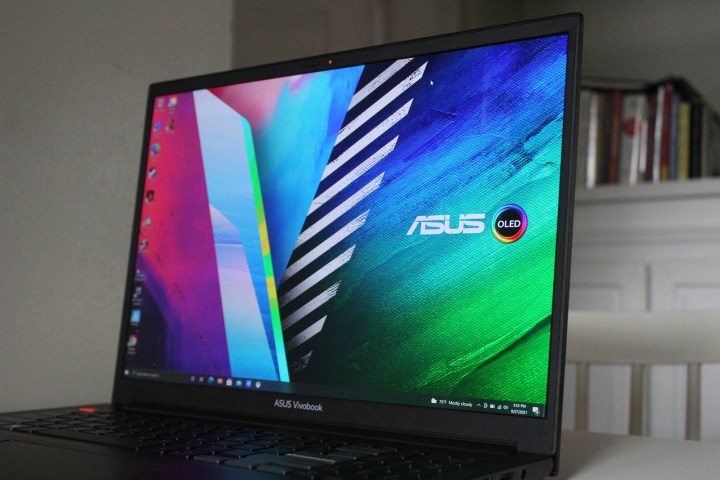For those outside the PC gaming world, 60Hz has been the default refresh rate on laptops. With the announcement of Samsung Display’s new 14-inch 90Hz OLED panels, though, we might finally see 90Hz breaking through as a new standard.
Samsung is already shipping these 90Hz panels in non-gaming laptops from Asus, such as the ZenBook 14 and VivoBook Pro 14. These aren’t the most expensive laptops in the world, either, which should give an idea of just how wide a reach this display technology could have.

“The 90Hz OLED panel offers more options for consumers who are looking to enjoy high-performance content on their laptops,” Samsung Display said. “With our innovative OLEDs, we’re further pioneering and leading the market in display technologies that offer superior image quality.”
Samsung Display was also quick to acknowledge the inherent advantage of OLED panels over traditional LCD. The company claims its 90Hz OLED panels showed a 10% improvement in blur length over a 120Hz LCD panel in video playback. This means smoother animations, regardless of what you’re doing.
Samsung Display already supplies panels for many of the most popular high-end OLED laptops, including the Dell XPS 15, the HP Spectre x360, and the Lenovo ThinkPad X1 Extreme. These are content creation- and professional-oriented laptops, though they often have impressive graphics performance under the hood as well. However, the 60Hz refresh rate has always meant that they didn’t double as gaming laptops all that well.
Of course, Samsung Display’s announcement is that its 14-inch are going into mass production. The 16-inch options appear to be in the works, according to Samsung, but are not yet being mass produced. That explains the 60Hz screen that came on the Vivobook Pro 16X that I reviewed at launch.

As of now, Asus has announced the ZenBook 14 and Vivobook Pro 14 will come with the new 90Hz OLED panels, which will be the first out of the gate that you can buy. Meanwhile, Lenovo recently announced the IdeaPad Slim Carbon with a 90Hz OLED panel as well. As it continues to roll out, you can expect to see other models and laptop manufacturers join the party.
The announcement from Samsung Display also comes on the heels of another refresh rate-related launch: 120Hz ProMotion coming to the iPhone 13 Pro. We’ve already written at length on why it could (or should) point to ProMotion eventually coming to the MacBook Pro, though that’s unlikely for this year’s release so far.
If that takes longer to roll out, however, these new OLED panels could give high-end Windows laptops an edge over the upcoming M1X MacBook Pros in the near future, which is focusing on mini-LED as the future of its display technology.


